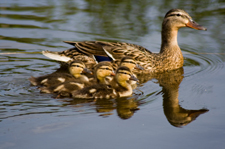We aim to create wetlands where bird life, mammals, native fish, and wetland plants thrive. Our motivation as landowners is to restore wildlife habitat, provide wetland mitigation, improve downstream water quality, and have a beautiful piece of land in the north Animas Valley preserved in a conservation easement as a gift to our family and future generations. In 1958, when 60 horsepower tractors became affordable, the wetlands were converted to hay fields. The project intends to restore the land to its historic condition. Wetlands are nurseries for native species. All life in wetlands is interdependent.
In Colorado, wetland impacts are governed by Section 404 of the Clean Water Act. Animas River
Wetlands, LLC will provide a welcome solution for developers, highway departments, and others
who have received permits to impact wetlands in other locations. The US Government requires
anyone who disturbs wetlands to replace them in the same watershed.
 Animas River Wetlands is home to many mallards. Some mallards
built nests on piles of decaying vegetation in wetlands. Hens are
philopatric, meaning the hen frequently will return to the site of last
year's successful nests.
Animas River Wetlands is home to many mallards. Some mallards
built nests on piles of decaying vegetation in wetlands. Hens are
philopatric, meaning the hen frequently will return to the site of last
year's successful nests.
The female typically lays one egg daily until she has accumulated a
full clutch. After the clutch is complete, incubating generally lasts 25-
29 days.
As the hatch date approaches, she will feign injury if disturbed.
When water enters a wetland, many suspended sediments drop out and settle on
the wetlands floor. A wetland's natural filtration process can remove excess
nutrients before water leaves a wetland, making it healthier for drinking and
supporting plants.
Advice from a Wetland by Ilan Shamir
Make a Splash
Take Time to Reflect
Listen to Nature
Reed more
Be green
What's the Rush
